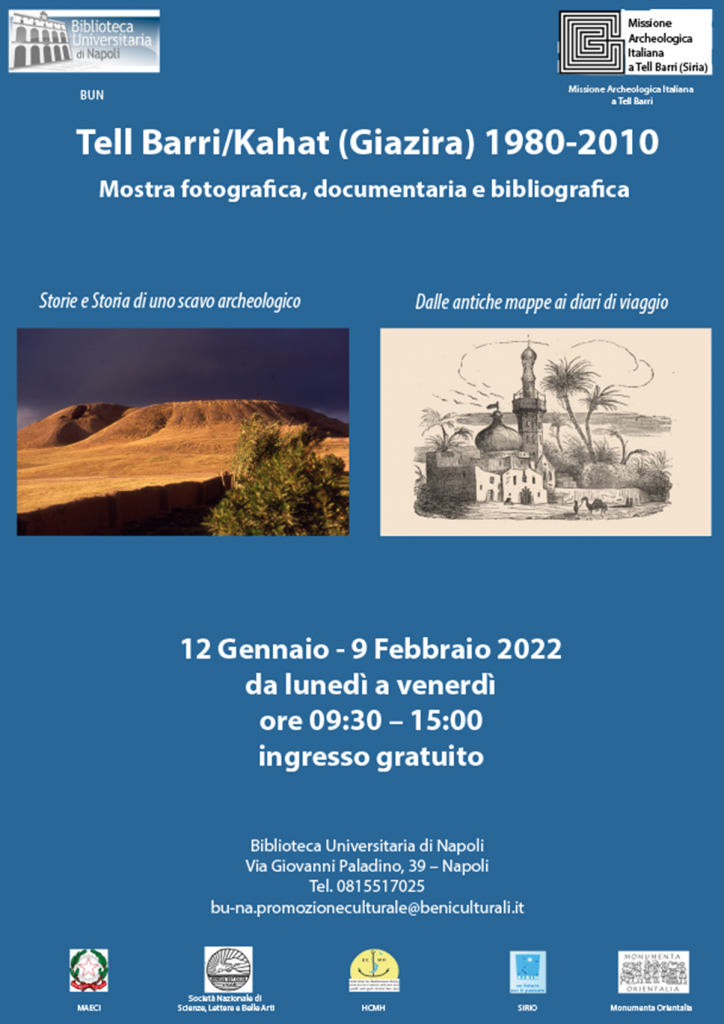Exhibition co-organized by HCMH postdoc, Dr. Paolo Cimadomo
Tell Barri/Kahat (Giazira) 1980-2010
Photographic, documentary and bibliographic exhibition
Stories and history of an archaeologists’ excavation
From ancient maps of travel journals
January 12 – February 9, 2022
Monday to Friday
09:30-15:00
Biblioteca Universitaria di Napoli
Via Giovanni Paladino, 39 – Napoli
Tel. 0815517025
bu-na.promozioneculturale@beniculturali.it
Free entry
The exhibition is part of the activities of the Italian Archaeological Exhibition in Tell Barri, under the aegis of the Italian Ministry of Foreign Affairs. It aims to keep alive the attention on the material and immaterial cultural heritage of the area of Mesopotamia – still subject to a disastrous war. The site of Tell Barri is a fundamental witness to the history of Mesopotamia: the excavation has helped to reconstruct the multi-millennial history of the Chalcolithic period and the ancient Mesopotamian cultures up to the Sasanian and then Arab conquest of the region, with the succession of Assyrian, Babylonian, Achaemenian, Hellenistic, Roman and Parthian domination.
The main purposes of the exhibition are:
1) to present the ‘environment’ in its geographical, geological, and climatic aspects, also with aerial and satellite photos to facilitate its viewing.
2) to illustrate the ways of living and aspects of daily life, from food to religion, funerary practices and crafts, with attention to the technical aspects of production, examined in diachrony. We will show some pottery sherds, that were imported for archaeological analysis;
3) to document the networks of trade and exchanges at local, regional and long distance level, both towards the West, as far as the Mediterranean and eastern Turkey, and towards the East, as far as the Tigris.
4) to recount the experiences of the young archaeologists who took part in the Mission over the years, through pictures made by themselves. We will focus on their relationships with people – from invited visitors of the site to the workers – and on the ‘discovery’ of Tell Barri’s environment, with attention to fauna and flora, the sharing of everyday experiences, such as shopping at the market, transport to the city.
5) to present texts written by travellers and merchants from southern Italy. These texts are preserved in the library holdings of the Biblioteca Universitaria di Napoli and testify the interest of the Neapolitan institutions in the Near East.


